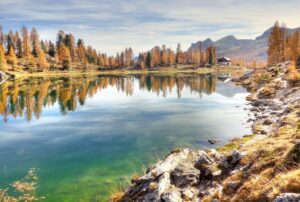Protecting the Pristine Waters of Rekshino Lake
Located in the heart of a picturesque forest in the remote valleys of Rekshino, Rekshino Lake is a sparkling gem that offers a serene escape for nature lovers and outdoor enthusiasts. With its crystal-clear waters and lush surroundings, the lake is home to a diverse array of plant and animal species, making it a valuable ecological hotspot. However, in recent years, the pristine waters of Rekshino Lake have come under threat from various sources, including pollution, habitat destruction, and overfishing. It is essential to take proactive steps to protect this natural treasure and ensure its preservation for future generations.
The Importance of Protecting Rekshino Lake
Rekshino Lake is not just a beautiful body of water; it is a vital part of the local ecosystem and plays a crucial role in supporting the diverse flora and fauna of the region. The lake provides habitat for a variety of aquatic species, including fish, amphibians, and invertebrates. It also serves as a breeding ground for waterfowl and other bird species, making it a popular destination for birdwatchers.
In addition to its ecological significance, Rekshino Lake also holds cultural and recreational value for the surrounding communities. Local fishermen rely on the lake for their livelihoods, while residents and visitors alike enjoy activities such as boating, swimming, and picnicking by its shores. Protecting the lake is not just about preserving its natural beauty but also about safeguarding the way of life of those who depend on it for sustenance and enjoyment.
Challenges to Water Quality
Despite its pristine appearance, Rekshino Lake faces a number of challenges that threaten its water quality and overall health. One of the primary concerns is the pollution caused by human activities in the area. Agricultural runoff, industrial discharge, and untreated wastewater are all contributing factors to the degradation of water quality in the lake. Chemical pollutants, such as pesticides and fertilizers, can harm aquatic life and have a negative impact on the ecosystem as a whole.
Another significant threat to the lake is habitat destruction, particularly from deforestation and urban development in the surrounding areas. Clearing of land for agriculture or construction can lead to erosion and sedimentation in the lake, which can smother aquatic plants and disrupt the delicate balance of the ecosystem. Invasive species, such as certain types of plants or fish, can also pose a danger to the native species that call Rekshino Lake home.
Overfishing is another issue that poses a threat to the ecological balance of Rekshino Lake. Excessive fishing pressure can lead to depletion of fish populations, disrupting the food chain and reducing biodiversity in the lake. Conservation measures, such as implementing catch limits and promoting sustainable fishing practices, are essential to ensure the long-term health of the lake’s fish stocks.
Protecting Rekshino Lake for Future Generations
In order to safeguard the pristine waters of Rekshino Lake, a concerted effort is needed from all stakeholders, including local communities, government agencies, and conservation organizations. Several strategies can be implemented to protect the lake and ensure its preservation for future generations.
One of the most crucial steps is to establish and enforce strict regulations for pollution control and waste management in the area surrounding Rekshino Lake. This includes monitoring water quality, enforcing zoning laws to prevent encroachment on the lake’s shores, and implementing wastewater treatment facilities to prevent contamination of the lake. Public awareness campaigns can also help educate the community about the importance of preserving the lake and encourage responsible stewardship of its resources.
Habitat restoration efforts, such as reforestation and erosion control measures, can help mitigate the effects of habitat destruction and prevent further degradation of water quality in Rekshino Lake. Creating buffer zones around the lake to protect it from runoff and pollution can also help maintain the integrity of the ecosystem and promote biodiversity.
To address the issue of overfishing, sustainable fishing practices should be promoted through the establishment of fishing regulations and enforcement of catch limits. Supporting local fishermen in adopting environmentally friendly fishing methods, such as using selective gear and avoiding sensitive areas, can help ensure that fish stocks remain healthy and viable for future generations.
Conclusion
Rekshino Lake is a valuable natural asset that must be protected and preserved for the benefit of the local community and the environment as a whole. By addressing the various threats to the lake’s water quality and ecosystem health, we can ensure that this pristine body of water remains a sanctuary for wildlife and a source of enjoyment for generations to come. By working together to implement conservation measures, raise awareness, and promote sustainable practices, we can secure the future of Rekshino Lake and uphold its status as a haven of natural beauty and biodiversity. Let us commit to protecting this precious resource and ensuring that its waters remain crystal clear for all to enjoy.





